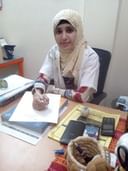Down Syndrome - Know How Occupational Therapy Can Help!
A genetic disorder, Down’s Syndrome is caused due to extra genetic material during cell division. It is the faulty arrangement of chromosomes which results in the Down’s Syndrome. It approximately affects one in 800 births around the world, across a wide spectrum of race, gender, region, and socio-economy. Since it is a naturally occurring condition whose underlying cause cannot be controlled or regulated, there is nothing one can do to undo this condition. Instead, people with Down’s Syndrome, because they are generally socially and intellectually underdeveloped, are equipped with learnings and interventions related to life-skills from very early in life and striving towards making them independent. Various therapies can be incorporated for improving the overall quality of life of the people born with Down’s Syndrome.
Occupational Therapy and Down’s Syndrome -
Development of motor skills is delayed in the children born with Down’s Syndrome. This is due to their certain physical characteristics like low muscle tone (hypotonia), loose ligaments or ligamentous laxity making the joints extra flexible, and decreased strength.
The aim of the Occupational Therapy for children born with Down’s Syndrome is to facilitate or enable the development of movement patterns optimally, as against accelerating the rate of development which is a general assumption. It helps in achieving developmental milestones in an efficient manner. Occupational Therapy hence helps children in developing a good or correct posture, aligning their foot properly for proper balance and movement, improving their walking pattern, and helping them generally through developing fine and gross motor skills for carrying out daily activities.
Moreover, Occupational Therapy helps in teaching self-care skills like getting dressed, eating, toileting writing, using a computer, etc. For teenagers, Occupational Therapy helps in identifying suitable skills, careers, jobs, and vocations to match with strengths, capabilities, and interests. Sensory integration activities help in teaching the child to produce an appropriate response to any situation, and in developing attention and concentration.
Occupational Therapy Assessment -
Children with Down’s Syndrome have delayed gross and fine motor skills, and lack basic cognitive and communication skills among many other issues they face due to their condition. Occupational Therapy addresses all these shortcomings of development for comprehensive management of the disease.
Occupational Therapy checks the sensorimotor components like muscular tone, strength, endurance, coordination, balance, range of motion, hand function, and posture. It also checks the perceptual and cognitive components like memory, attention, figure-ground, and directionality. For checking social skills, areas like peer relationship, verbal and non- verbal communication, and group interaction are assessed.
According to the assessment results, intervention strategies and fun activities are devised for the child to promote optimal function of motor senses.
Take Away -
Down’s Syndrome cannot be cured but can be managed through methods like Occupational Therapy which helps in teaching basic life skills for making the patients confident and independent to face the world on their own.



+1.svg)
